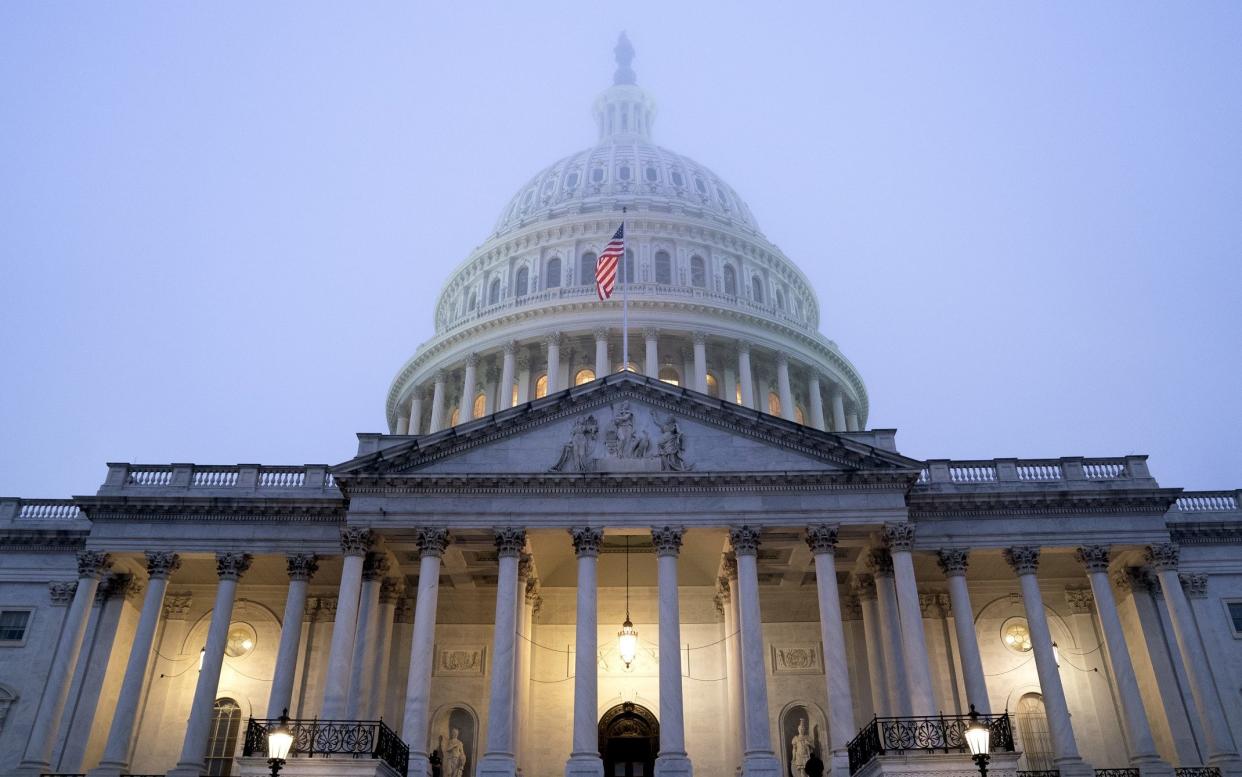2020 Senate election: What is it and why is it important?

All eyes are focused on Donald Trump as he pursues another term in the White House, but another important race rages on.
The battle for the United States Senate, culminating on November 3, is also hugely significant for the future of the country.
But why is this the case, and what could the outcome be? Read below to find out.
What is it?
The Senate is the upper chamber of Congress, which has the power to ratify treaties, confirm senior government appointees and judges, as well as introducing legislation. The lower chamber of Congress is the House of Representatives, which has 435 members.
Every four years when the presidency is up for grabs, one third of the 100-member Senate and the entire House are up for election. This also happens in even-numbered years when there is not a presidential election.
Senators serve six year terms and must be at least 30 years of age.
Right now the Senate is under Republican control, with the party enjoying a 53-47 majority, but the impending elections could change this.
Why is it important?
The race between the Democrats and Republicans is tight this year - and the result could have great implications for whoever wins the presidency.
The party that controls the Senate will have power over the next president’s legislative agenda, cabinet officials and judicial appointments.
If Democratic nominee Joe Biden unseats Mr Trump, but fails to gain the Senate, he could be left unable to pass legislation important to his presidency - on issues such as healthcare, climate change and immigration.
Likewise for Mr Trump, a Democrat-controlled Senate could stall some of his more conservative policies.
Until now a gridlock in the Senate has had a significant impact, leading to little progress on key issues including economic recovery during the coronavirus pandemic.
Where will the battle be decided?
Eight of the top 10 seats viewed as most likely to flip, based on polls by CNN, are held by Republicans. The party is defending 23 seats this year, compared to the Democrats’ 12.
Arizona, Colorado, Maine, North Carolina, Georgia, Montana, and Iowa are Republican held but considered competitive by Democrats. The party also thinks it has a good chance of winning in Arizona and Colorado from Republican control.
Democrats however are widely projected to lose a seat in the traditionally Republican state of Alabama, one they managed to capture during a special election in 2017.
This means they will need to win five seats to gain a majority, or four if Mr Biden wins, as his vice-president Kamala Harris would have the deciding vote in the event of a tie-break.
Meanwhile, the Republicans are looking towards Alabama and Michigan to strengthen their majority.
Who are the key players?
In Maine, long-term Republican Senator Susan Collins is caught between voters who are unhappy she has not embraced Mr Trump and those who are disappointed she has not done more to stand up to him, giving the Democrats an opportunity.
Over in Colorado first-term Republican Senator Cory Gardner is suffering from the decline in Mr Trump’s popularity, for whom he has been considered a long-term ally.
Arizona’s Republican candidate too is suffering from her connection to Mr Trump. Martha McSally is behind former astronaut Mark Kelly, in part due to Mr Trump’s alienation to Arizona's growing suburban and Latino population.
But in Michigan, although Democrat Senator Gary Peters has a 43 per cent majority among the electorate, Republican John James' 42 per cent backing keeps the race neck and neck.
The Senator most likely to lose their seat is Democrat Doug Jones of Alabama.

Who looks likely to win?
So far the Senate race looks even closer than the presidential election. Democrats are favoured by forecasters to win the presidency and keep the House majority, but the future of the Senate is far less certain.
Right now, the Democrats are likely to win a majority by a small margin of 52.4 seats to 47.6, according to polling by the Economist.
In early October the Republicans had a bleak outlook, thanks to Mr Trump’s handling of the coronavirus pandemic and the controversial first presidential debate, which has impacted current polling.
But now record level spending in key states has spurred the Republicans on, and leaning states appear to be stabilising.
The appointment of Amy Coney Barrett as Supreme Court judge could also have an impact yet to be reflected by analysis.


